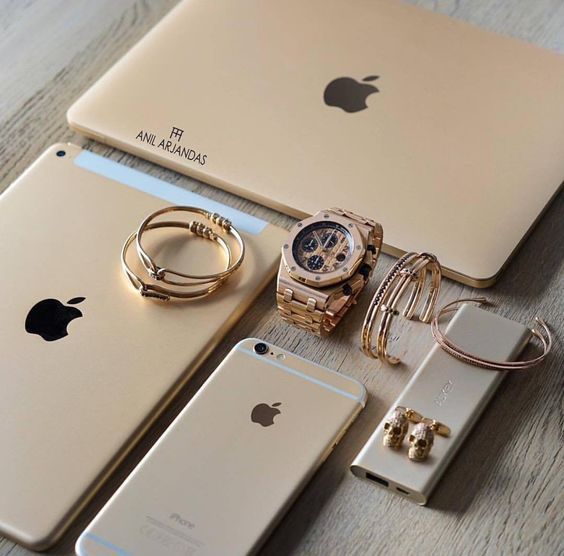Take a second to think about this: what brands have a significant impact on your lifestyle? Whether it’s what you wear, what’s around your household or what you use on a day-to-day basis. If you constantly think of the same brand(s), then they have successfully achieved the title of a ‘lifestyle brand’.
A lifestyle brand is a brand that attempts to embody the interests, attitudes, values, aspirations or opinions of a group or culture. Lifestyle brands aim to inspire and motivate people with the goal of impacting the consumer’s way of life. This includes tailoring goods and services to the expectations and experiences their consumers crave.
We’re back with our Digital Advantage team to provide the five steps to creating or transforming your business into a lifestyle brand.


Be a Culture Creator
This is the first and very important step to creating a unique brand that has the potential to blossom into a lifestyle brand. Creating a culture is what made the success of businesses like WeWork, which is a co-working space that caters to startup brands and small companies that need an office space, but cannot or do not want to commit. This creates a culture of like-minded entrepreneurs that perceive WeWork as a lifestyle.
To clarify, this doesn’t always mean reinventing a concept, but refining one. Start by researching your target audience’s lives - otherwise known as ethnography. Observe what people want and how products or services play a role in what they rely on to fulfill their needs. Once you’ve understood this, progress a product or service to better align with their values, desires, and culture.
Consider Your Target Audience
Content marketing is a vital part to reaching your target audience. When it comes to lifestyle branding, you want to make sure it’s relatable. For example, Red Bull markets their energy drinks to individuals who enjoy sports and outdoor activities with their slogan “Red Bull gives you wings.” The brand could easily market themselves as other energy drinks do by promoting a product that keeps you awake. However, they chose to take the route of marketing the product as a refreshment for those who are full of energy and awaiting the next adventure. Sound like a lifestyle you or someone you know lives? That’s exactly the point and it’s shown throughout all of its marketing efforts from social media to advertisements.
As a brand that’s trying to gain the attention of the everyday customer, your marketing strategy must correlate with their lives and interests. During our 2019 eWN Entrepreneur Conference + Expo, Janet Kraus, the CEO of the fashion brand Peach, took the stage to talk more about how to go about doing so.
“The two things people want is, one, to have meaning and purpose in their life that they can identify and work towards, and the second is to be seen and appreciated for who they are. When you feel these two things you just light up,” said Kraus in regards to what a brand should focus on.
Pro Tip: Tell a story that shows why they need your product or service. Steer away from trying to sell a product. Gear towards selling an experience.
Invest in Brand Awareness
In order to get the most out of your marketing materials, you must invest in brand awareness. This strategy allows your audience to recognize your brand and product/service on the market no matter how saturated it may be. A lot of money is spent on this segment of branding to ensure quality is associated with what you’re offering.
This means investing in high-quality video promotions, web designs, and physical and digital advertisements. Another thing to consider is strategizing how to make your brand the first one potential consumers think of before looking at the price. A good example of this is Apple. The brand has marketed itself so well that price rarely plays a role in the purchasing power of consumers.
Invest in aspects that will make what you’re offering memorable. Whether that’s slogans, values, mission statements, aesthetics, appearances, or symbols - all of these allow consumers to recognize your brand before hearing the name.
Support the Cause of a Subculture or an Identity
This can get confused with the means of a goal, but in reality, it is the end-goal. Regular brands use identity and subculture as a short-term campaign that focuses on an audience’s interests and lifestyle to achieve broader goals like market share growth.
The key is to focus on deep, long-term investments in your target market. If you are a clothing brand that focuses on sustainability, then you would invest in running advertisements around sustainable organizations like the Centre for Sustainable Fashion, while also promoting upcoming fashion events that collaborate with environmentally-friendly brands, tailoring content to sustainable fashion readers, and more. There is no limit or end to what a lifestyle brand can support.
Build on Prominence, Not the Product
As stated before, telling a story is important. Keep this at the forefront of your marketing campaigns. It becomes inauthentic when the product is the main focus. A lifestyle brand will feature it’s audience’s activities more prominently than the product or service itself to create a stronger association with the lifestyle.

If you find yourself struggling, think of using subtle cues such as logos and colors in the background. A great example of this is Bacardi’s “Unveiling the Artist Beyond the Stage” event with Run the Jewels. It focuses on Killer Mike’s passion for rapping and cutting hair while keeping the branding in the background, but just enough that it subtly showcases the brand.
Taking these steps into consideration and being consistent can transform your brand from a business into a way of life.









